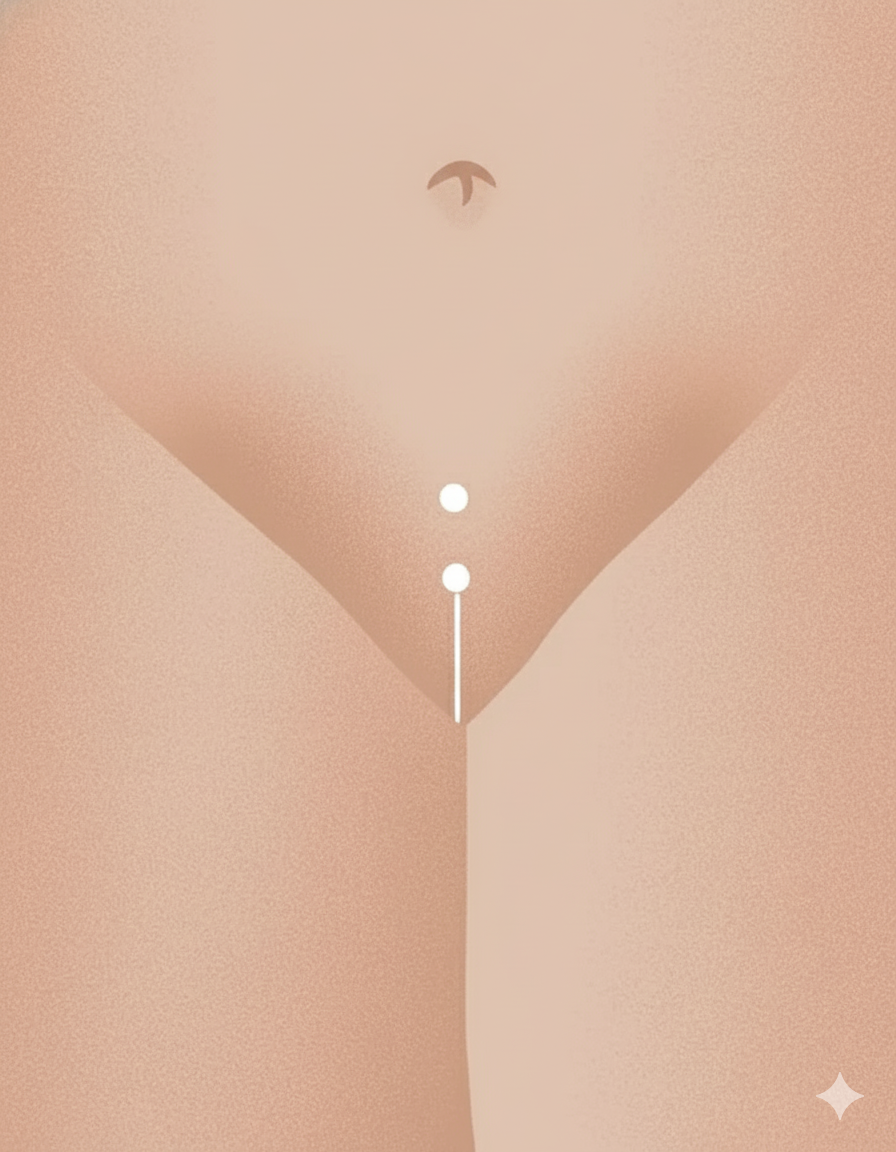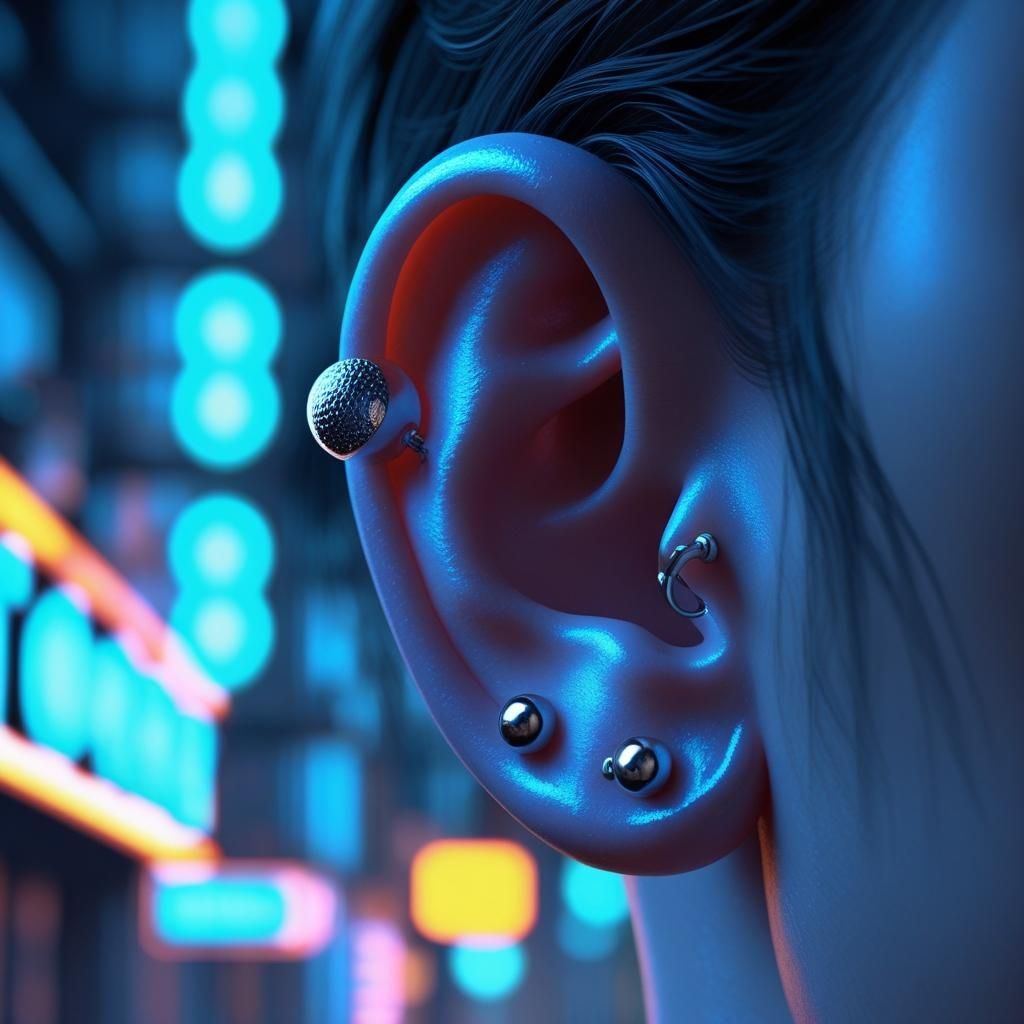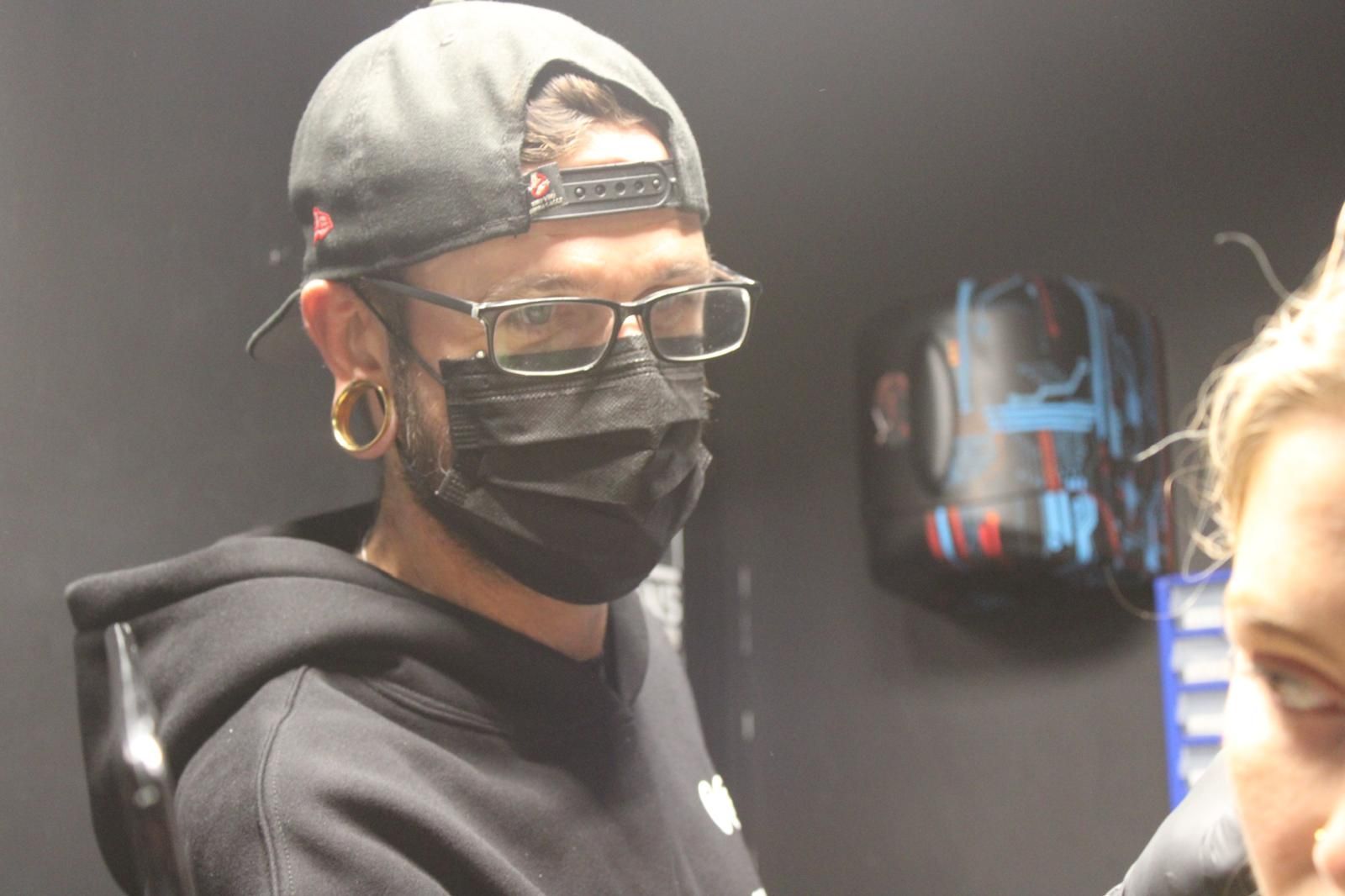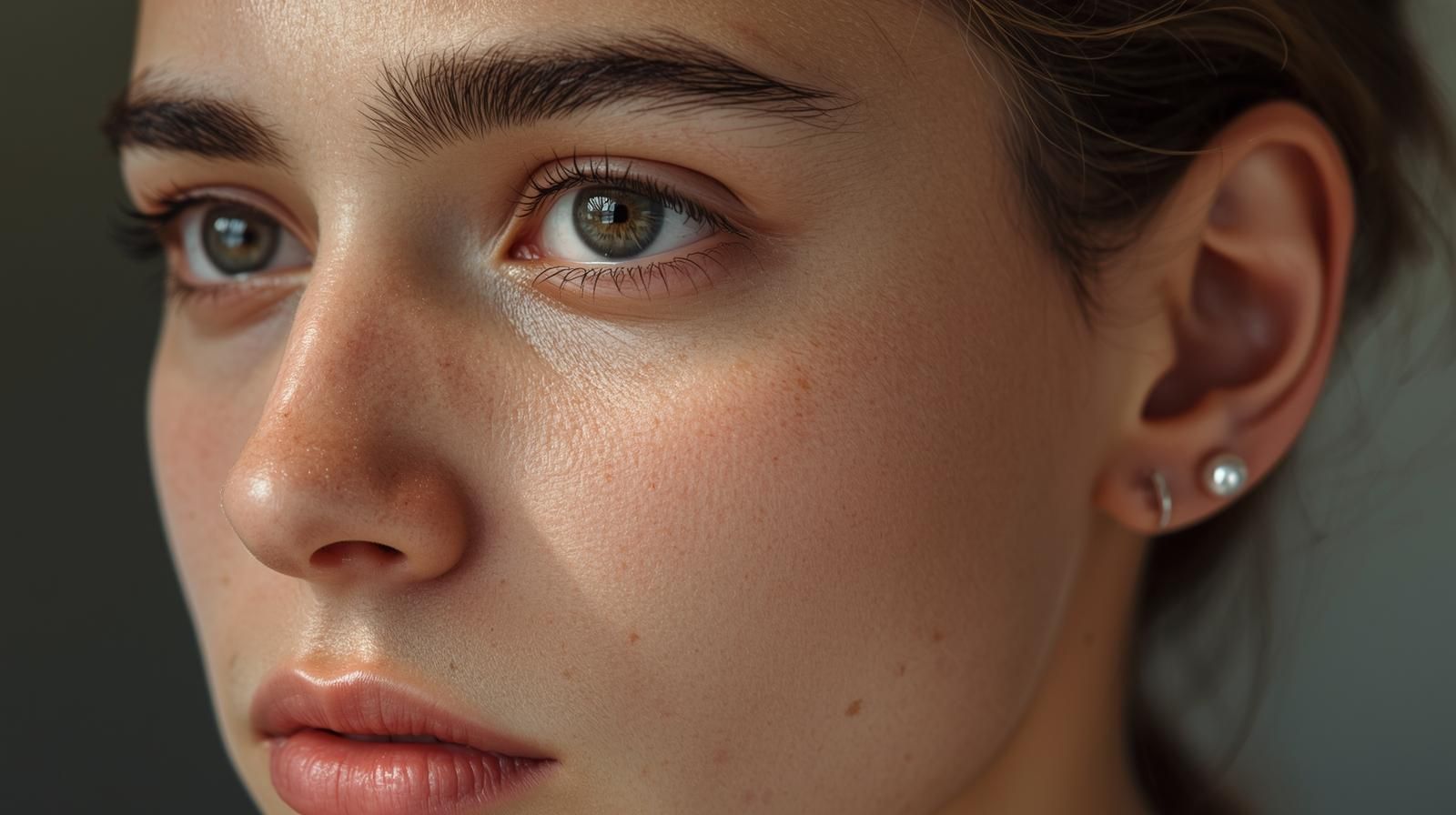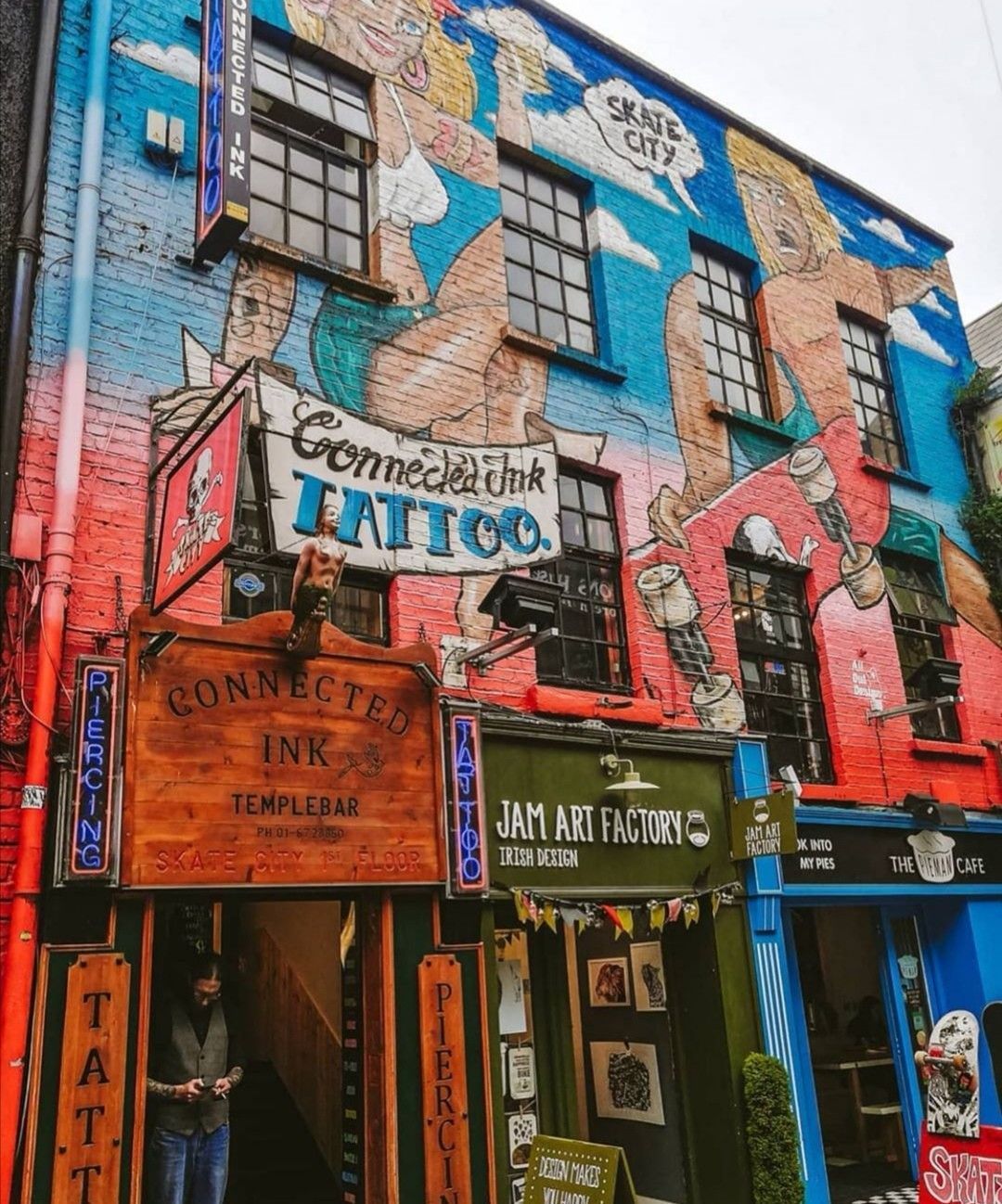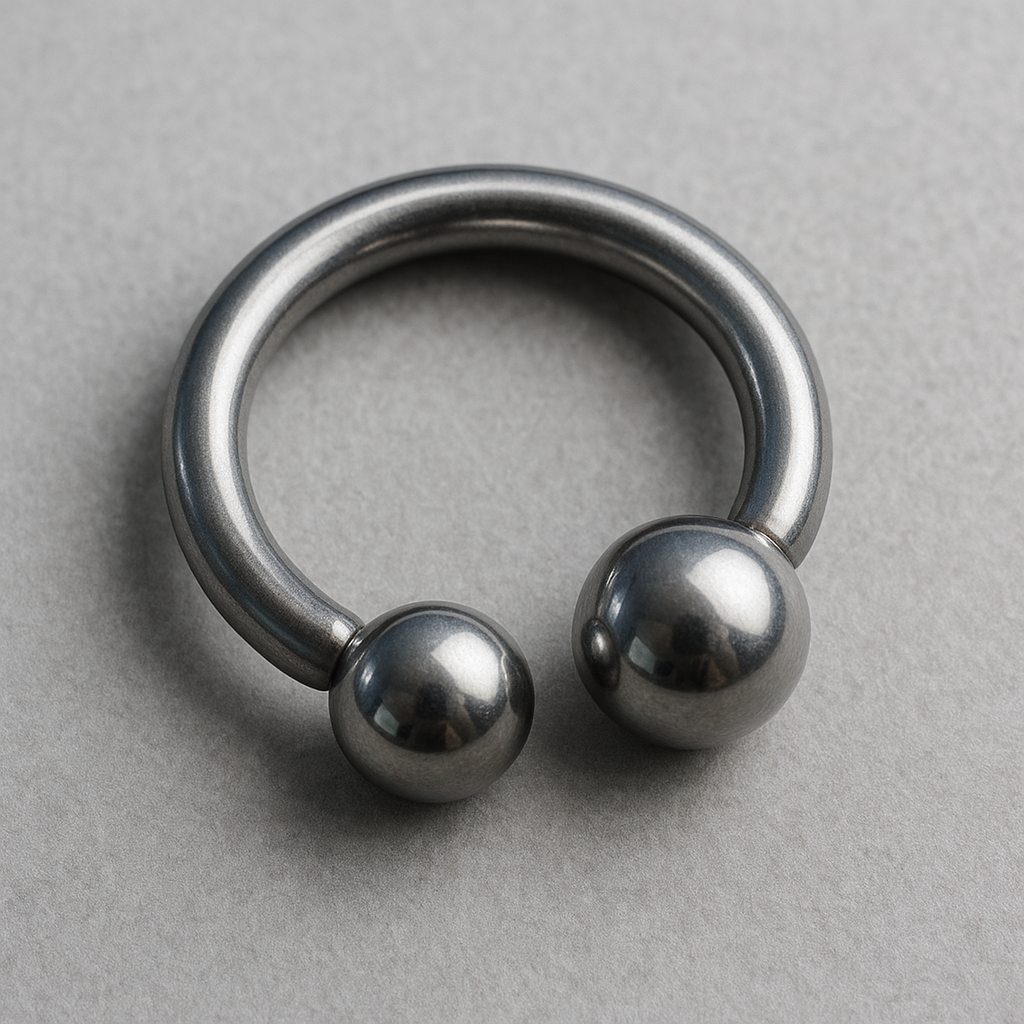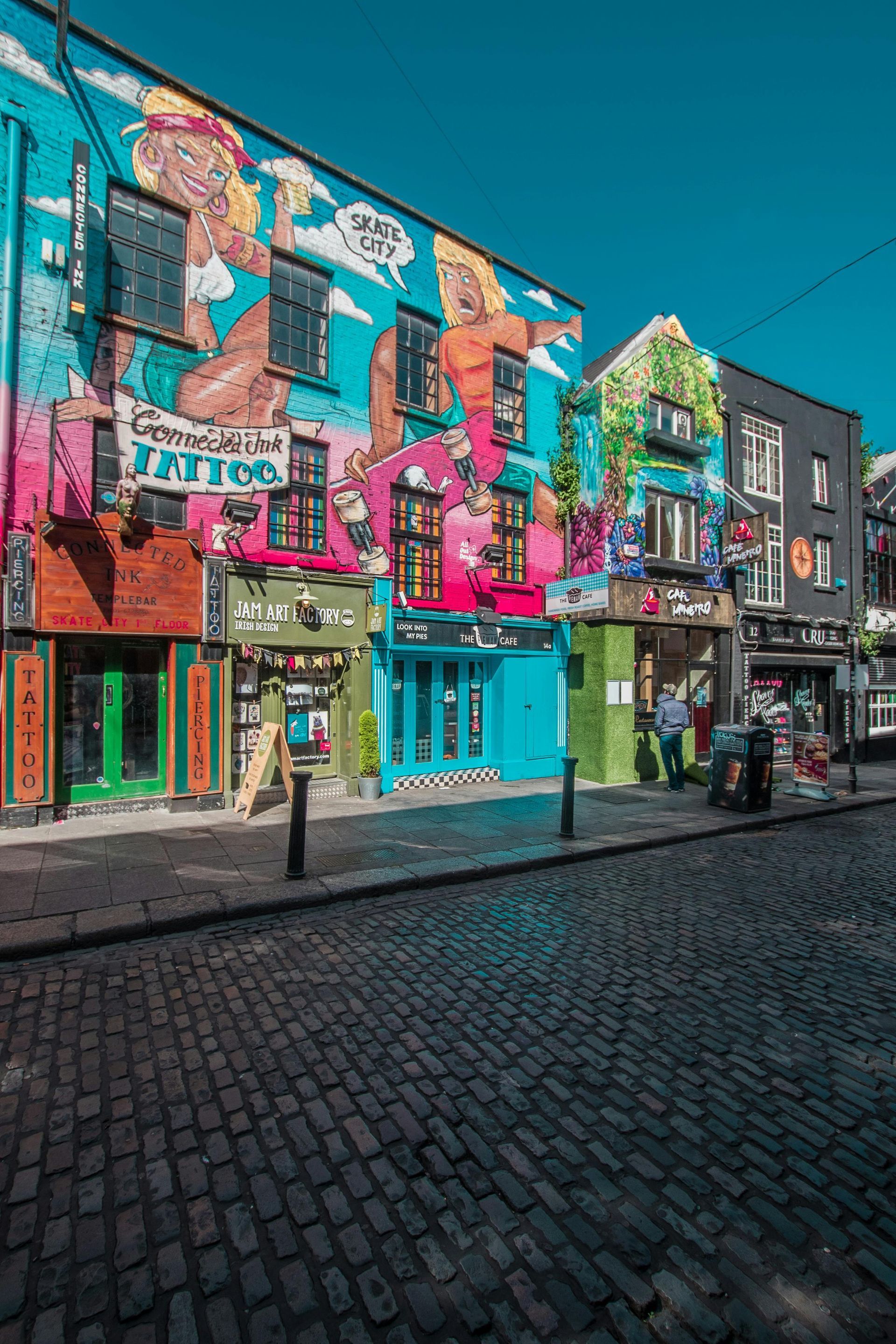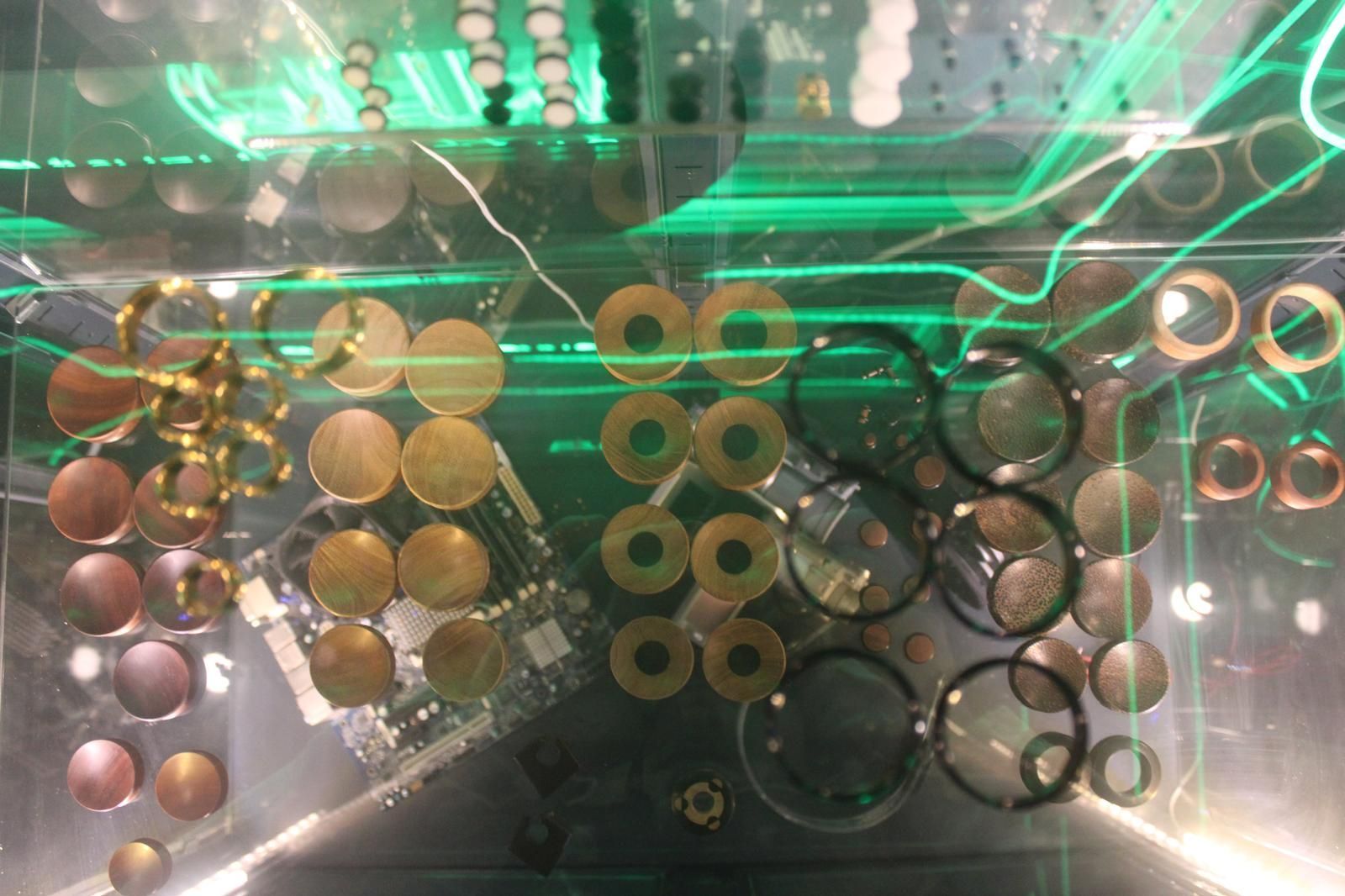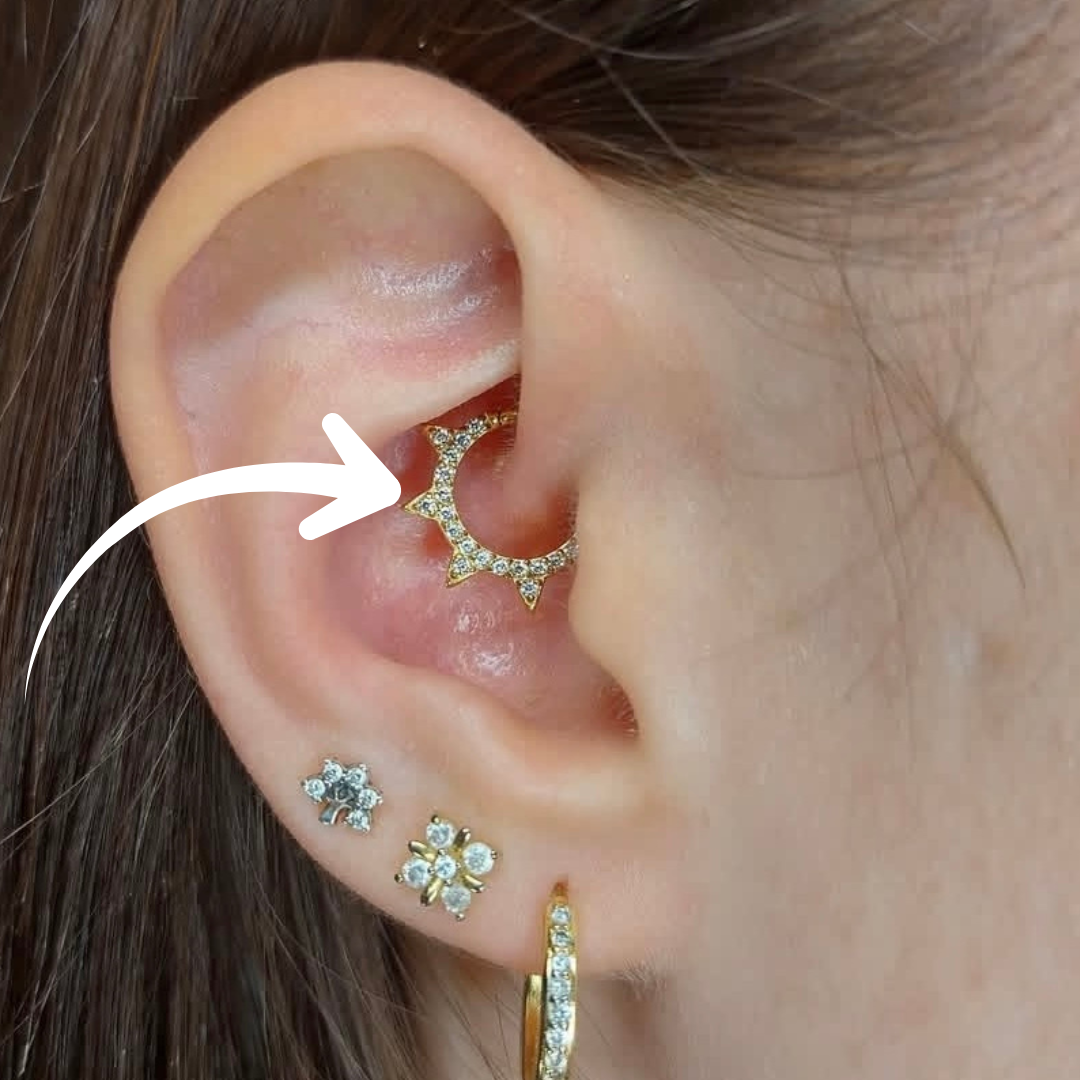Piercing in Dublin: The History Of Piercing in Dublin & A List Of All Shops
Introduction
Dublin, a city renowned for its rich history and vibrant culture, offers more than just picturesque landscapes and historic landmarks. It is also a thriving hub for body art enthusiasts from around the globe. The city’s piercing scene is as diverse as its population, offering everything from traditional piercings to contemporary body modifications. Whether you are a local or a visitor, Dublin provides a myriad of options for those looking to express themselves through body art. This guide will delve into the history of piercing in Dublin, highlight key studios, discuss best practices, and provide practical advice to ensure your piercing experience is both safe and satisfying.
The History of Piercing in Dublin
Ancient Roots and Irish Context
The history of body piercing in Ireland stretches back to ancient times, with archaeological findings providing a glimpse into the rich tradition of body adornment in Irish culture. Artifacts housed at the National Museum of Ireland, such as decorative gold and bronze earwear dating from approximately 800–700 BC, underscore the longstanding tradition of self-expression through body art. These early examples reveal the influence of various ancient cultures, including the Celts, who were known for their intricate jewelry and body modifications. As society evolved, so too did the practices, adapting and transforming into the modern piercing trends we observe today.
This historical context not only highlights the cultural significance of body art in Ireland but also emphasizes the continuity and evolution of personal expression. These early adornments were often symbolic, representing status, identity, or affiliation within ancient societies. Today, the symbolism of piercings continues, often signifying individuality, fashion, or personal milestones.
Early Modern Scene: The 1990s
The mid-1990s marked a significant turning point in Dublin’s body art scene, as dedicated piercing and tattoo studios began to emerge in the city center. Among these pioneers was Snakebite, established in 1996 on Middle Abbey Street, which quickly gained a reputation for its skilled artists and innovative techniques. As the decade progressed, other studios like Celestial Ring opened on the top floor of Stephen’s Green Shopping Centre. Celestial Ring eventually evolved into Wildcat Ink in 1999, cementing its place as a cornerstone of Dublin's burgeoning piercing community. These establishments laid the groundwork for the city's flourishing piercing scene by offering a combination of traditional and modern techniques in a professional setting.
The 1990s also witnessed a cultural shift where body art began to gain acceptance as a form of self-expression rather than rebellion. This era was pivotal in breaking down societal stigmas and ushering in a new appreciation for the artistry and skill involved in piercing. Studios began to prioritize client education on aftercare and the significance of choosing quality jewelry to promote healing and prevent complications.
Growth and Mainstreaming: 2000s to Early 2010s
The early 2000s to the early 2010s witnessed a period of unprecedented growth and mainstream acceptance of body piercing in Dublin. This era saw the emergence of more professional studios, which catered to a steady demand for piercings despite economic fluctuations. Studios during this time focused on enhancing the quality and variety of their services, offering a wider range of piercing options and high-quality jewelry. The increase in professional standards attracted a diverse clientele, including professionals, students, and tourists, who sought both traditional and cutting-edge body modifications.
In addition to the growth in professional standards, this era highlighted the importance of artist-client relationships, with studios fostering environments that were both welcoming and educational. Clients were encouraged to ask questions and engage with artists, creating a dialogue that enhanced the overall experience and ensured that personal preferences and safety were prioritized.
The Rise of Big Studios: Mid-2010s
By the mid-2010s, the piercing scene in Dublin had evolved further with the advent of larger, multi-artist studios. The Ink Factory, which opened in Temple Bar in 2014, exemplified this trend by combining tattoos, piercings, and a creative hub model across two nearby locations. This innovative approach offered clients a more comprehensive experience, attracting a diverse clientele that ranged from first-timers exploring body art to seasoned enthusiasts looking for unique modifications. These studios emphasized collaboration among artists, ensuring a blend of styles and expertise that catered to the varied tastes of Dublin's vibrant community.
The collaborative model not only provided clients with a broad spectrum of artistic styles and techniques but also fostered a sense of community within the studios. Artists could share knowledge and skills, leading to the continual evolution of techniques and the introduction of new trends, such as microdermal and surface piercings, which gained popularity during this period.
Luxury Piercing: Late 2010s
The late 2010s introduced luxury piercing to Dublin, significantly elevating the status of body art within the city. The arrival of the fine-jewelry piercer Maria Tash brought the "curated ear" concept to Brown Thomas through pop-ups in 2017, eventually establishing a permanent presence in October 2018. This development marked a shift towards merging high-end retail with body art, offering clients the opportunity to adorn themselves with exquisite, designer jewelry. The curated ear trend, characterized by multiple piercings on the ear using high-quality, customizable jewelry, quickly gained popularity, drawing in a clientele interested in bespoke and luxurious body modifications.
Luxury piercing has redefined the perception of body art, aligning it with fashion and personal style. This shift has been instrumental in attracting a new demographic, including individuals who may have previously been hesitant about body modifications. With the focus on high-quality jewelry and personalized designs, clients are now empowered to view their piercings as an extension of their personal brand or fashion statement.
Regulatory Environment
Current Regulations
The regulatory environment for body piercing in Ireland presents a unique landscape, as there is no national licensing system specifically governing tattooing and body piercing. Instead, practitioners adhere to non-statutory infection-control guidelines, which were first issued by the Department of Health and Health Service Executive in 2015 and updated in 2019. These guidelines emphasize the importance of maintaining strict hygiene standards in piercing studios, requiring the use of sterilized equipment and disposable needles to prevent infections. While there have been periodic legislative proposals to introduce age limits for tattoos and intimate piercings, comprehensive regulation has yet to be enacted. The current framework relies heavily on self-regulation within the industry, placing the onus on studio owners to uphold high standards of cleanliness and safety.
Studio owners and artists must remain vigilant, continuously updating their practices to align with the latest health guidelines and innovations in equipment sterilization. This proactive approach not only ensures client safety but also builds trust and credibility within the community. Studios often display their commitment to hygiene through visible certifications and by encouraging transparency in their processes, such as offering tours of their facilities or explaining their sterilization techniques to prospective clients.
Choosing a Piercing Studio in Dublin
Key Considerations
Selecting the right piercing studio is crucial to ensuring a safe and satisfying experience. Here are key factors to consider:
- Hygiene and Safety Standards: A reputable studio follows strict hygiene protocols, using disposable needles, sterilized equipment, and maintaining clean facilities. Regular inspections and adherence to the latest health guidelines should be evident. Prospective clients can ask to see sterilization equipment or inquire about the studio’s cleaning procedures to ensure compliance with safety standards.
- Experience and Expertise: The qualifications and experience of the piercers are critical. Research the piercers' backgrounds, looking for those who have undergone professional training and have a track record of successful procedures. Studios known for their professionalism and skill often display certifications and accolades that highlight their expertise and commitment to client safety.
- Customer Reviews: Online reviews and testimonials provide valuable insights into customer satisfaction and the studio's reputation. Platforms like Google, Yelp, and social media can reveal real experiences from past clients, offering a glimpse into the studio’s strengths and weaknesses. Consistently high ratings and positive feedback are indicators of a studio's reliability.
- Range of Services: Consider studios that offer a variety of piercing options and high-quality jewelry. A diverse range of services indicates a studio's ability to cater to different preferences and needs, from traditional ear piercings to more complex body modifications. Studios that offer consultations and personalized recommendations demonstrate a commitment to client satisfaction.
When evaluating studios, it's beneficial to schedule consultations to discuss your needs directly with the piercers. This face-to-face interaction provides an opportunity to assess the studio's level of professionalism and to ask detailed questions about the procedure, jewelry options, and aftercare recommendations. A knowledgeable and approachable piercer will enhance your overall experience and ensure your specific needs and concerns are addressed.
Notable Piercing Studios in Dublin
- Impulse Bioworks & Piercing: Located in Temple Bar, Impulse Bioworks is renowned for its specialization in precision piercings, biohacking, and implants. The studio’s innovative approach attracts clients interested in cutting-edge body modifications that incorporate technology, such as RFID implants.
- The Ink Factory: A creative hub offering tattoos and piercings, The Ink Factory operates with a philosophy that embraces both art and community. With locations in Temple Bar, the studio provides a welcoming environment where clients can explore various body art options while connecting with a community of artists.
- Wildcat Ink: With multiple locations, Wildcat Ink is a long-standing name in Dublin's piercing scene. The studio is known for its experienced artists and wide range of services, making it a popular choice for both locals and visitors seeking traditional and contemporary piercings.
- Maria Tash at Brown Thomas: Known for luxury piercings, Maria Tash offers a curated ear experience that combines high-end jewelry with personalized service. Clients can expect a boutique experience, where they receive expert advice on selecting jewelry that complements their style and enhances their appearance.
Each of these studios has carved out a niche within Dublin's piercing community, offering unique services and experiences that cater to diverse tastes and preferences. From the technologically advanced offerings at Impulse Bioworks to the luxury and fashion-forward approach of Maria Tash, Dublin's piercing scene is both dynamic and inclusive.
Best Practices for Piercing Aftercare
Immediate Post-Piercing Care
Proper aftercare is essential to ensure a smooth healing process and minimize the risk of infection. Here are the best practices for immediate post-piercing care:
- Cleaning: Clean the piercing with a saline solution twice daily. Saline solutions are gentle and effective in removing bacteria without irritating the skin. Avoid using harsh substances like alcohol or hydrogen peroxide, as these can dry out and irritate the skin, potentially prolonging the healing process.
- Avoid Touching: Refrain from touching the piercing with unwashed hands to prevent the introduction of bacteria and infection. If it is necessary to touch the piercing, always wash your hands thoroughly with soap and water beforehand.
- Jewelry Care: Do not remove or change the jewelry until the piercing is fully healed. Keeping the initial jewelry in place allows the piercing to heal correctly and reduces the risk of irritation and infection.
Long-Term Aftercare
After the initial healing phase, long-term care is crucial to maintain the health of your piercing:
- Monitor for Infection: Be vigilant for signs of infection, such as redness, swelling, or discharge. If these symptoms occur, consult a professional piercer or healthcare provider promptly to address any issues before they worsen.
- Jewelry Maintenance: Regularly check that the jewelry is secure and clean it to prevent buildup. This includes gently wiping down the jewelry with a saline solution and ensuring that any threads or closures are tight to prevent accidental loss.
- Lifestyle Adjustments: Avoid swimming in pools or hot tubs until the piercing has healed completely, as these environments can harbor bacteria that increase the risk of infection. Additionally, be mindful of activities that may cause trauma to the piercing, such as contact sports or activities requiring protective gear.
Engaging in regular aftercare routines not only ensures the longevity of your piercing but also maintains its aesthetic appeal. Clients are encouraged to attend follow-up appointments with their piercers to assess healing progress and receive personalized advice on jewelry upgrades or additional piercings.
Common Types of Piercings Available
Ear Piercings
Ear piercings are the most popular and versatile type of piercing available, with options to suit every aesthetic:
- Lobe: The most common type of ear piercing, the lobe piercing is often the first piercing people receive. It typically heals within 6-8 weeks, making it a relatively low-maintenance option.
- Helix: Located on the upper ear cartilage, helix piercings are popular for their subtle yet stylish appearance. Healing can take 6-12 months, requiring patience and consistent aftercare.
- Tragus: Pierced through the small cartilage in front of the ear canal, tragus piercings are a unique choice that can complement other ear piercings. Healing can take several months, during which care must be taken to avoid irritation from headphones or earphones.
Facial Piercings
Facial piercings offer a bold way to accentuate facial features:
- Nostril: A popular choice for its simplicity and versatility, nostril piercings usually take about 2-4 months to heal. They can be adorned with a variety of jewelry, from simple studs to decorative hoops.
- Eyebrow: Eyebrow piercings heal within 6-8 weeks and add an edgy look to facial features. They are often chosen by those seeking a piercing that is both striking and personal.
- Lip: Lip piercings, including variations like Monroe or Medusa, offer a distinctive look with healing times around 2-3 months. These piercings require careful aftercare, especially when eating or drinking.
Body Piercings
Body piercings provide options for those seeking more adventurous modifications:
- Navel: A trendy choice, especially among women, navel piercings have a healing time of 6-12 months. They are typically visible with certain clothing styles, making them a popular choice for those who enjoy showing off their piercings.
- Nipple: Increasingly popular among both men and women, nipple piercings typically take 6-12 months to heal. They offer a discreet yet bold statement for those who choose them.
- Surface Piercings: Surface piercings involve piercing flat areas of the body, such as the nape of the neck or hips. Healing times vary significantly, and these piercings require careful aftercare to prevent rejection or migration.
The diversity in piercing types allows individuals to select options that best express their personality and aesthetic preferences. It is crucial to consult with a professional piercer to understand the specific care needs and suitability of each type of piercing, ensuring a satisfying long-term result.
Piercing Trends in Dublin
Curated Ears
The curated ear trend has gained significant traction in Dublin, fueled by the influence of luxury brands like Maria Tash. This trend involves multiple piercings on the ear, often mixing different styles and jewelry to create a personalized look. Clients can choose from various combinations of studs, hoops, and cuffs to achieve a unique aesthetic that reflects their personality and style. The rise of curated ears has encouraged many to view ear piercings as an art form, with the potential to evolve over time as tastes and trends change.
Piercing artists play a crucial role in guiding clients through the curation process, offering insights into jewelry selection and placement that complement the client's facial features and personal style. This collaborative approach ensures that the final look is cohesive and personalized, enhancing the overall piercing experience.
Dermal and Surface Piercings
Dermal and surface piercings have become more common in Dublin, offering unique ways to adorn the body. These piercings involve inserting a single-point anchor into the skin, allowing for a jewel to sit flush against the surface. They can be placed almost anywhere on the body, providing endless possibilities for creative expression. Dermal and surface piercings appeal to those seeking a distinctive look that stands out from traditional piercings, and they require careful consideration and aftercare to ensure successful healing.
The increasing popularity of dermal and surface piercings reflects a broader trend towards individuality and customization in body art. Clients are often drawn to these piercings for their ability to complement tattoos or existing body modifications, creating a cohesive and personalized aesthetic.
Biohacking and Implants
Impulse Bioworks in Dublin has been at the forefront of biohacking and implant technology, offering services such as RFID implants. These options attract individuals interested in merging technology with body art, allowing for enhanced functionality and futuristic modifications. Clients who choose these services often seek to push the boundaries of traditional body art, exploring new ways to integrate technology into their daily lives. Biohacking and implants represent a growing niche within the piercing community, reflecting a broader trend towards personalization and technological integration.
The fusion of technology and body art opens up new possibilities for self-expression and functionality, allowing individuals to customize their bodies in ways that were previously unimaginable. This trend is indicative of the evolving landscape of body art, where innovation and creativity continue to drive new developments and opportunities for personal expression.
FAQ Section
What is the minimum age for getting a piercing in Dublin?
While there is no national regulation regarding the minimum age for piercings, most reputable studios in Dublin have established their own age policies. Typically, studios require parental consent for individuals under 18, ensuring that younger clients have the guidance and approval of a guardian before proceeding with a piercing. This policy reflects a commitment to responsible practice and client safety.
How much does a piercing typically cost in Dublin?
The cost of a piercing in Dublin varies depending on the type of piercing and the jewelry chosen. Basic piercings, such as ear lobes or nostrils, can start around €30-€50, making them accessible options for those new to body art. More complex or luxury options, such as intricate cartilage piercings or those involving high-end jewelry, may be priced higher. Studios often provide consultations to discuss pricing and help clients choose options that fit their budget and style.
How long does it take for a piercing to heal?
Healing times for piercings vary significantly based on the type of piercing and individual factors such as health and aftercare practices. Ear lobes typically heal within 6-8 weeks, making them one of the quickest options. In contrast, cartilage or body piercings, such as navel or nipple piercings, may take several months to a year to heal fully. Following proper aftercare instructions is crucial to ensure timely and successful healing.
Can I bring my own jewelry for the piercing?
Most studios prefer to use their own jewelry to ensure quality and compatibility with their equipment. This policy helps maintain high standards of hygiene and reduces the risk of complications during the healing process. However, some studios may allow clients to bring their own jewelry after discussing it with the piercer, provided it meets the studio's quality and safety criteria.
Conclusion
The piercing scene in Dublin is rich with history and diversity, offering something for everyone from traditional ear piercings to advanced body modifications. By choosing a reputable studio and following best practices for aftercare, you can ensure a positive piercing experience. Whether you're a first-timer or a seasoned enthusiast, Dublin provides a vibrant and professional environment for your piercing journey, reflecting the city's unique blend of tradition and innovation in the world of body art.
